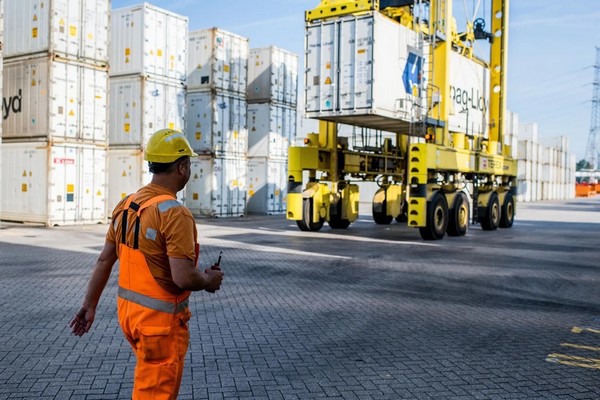Growth within Port of Antwerp's cold chain segment is set to persist in 2021. This is all the more remarkable in a year when the global supply chain was facing unprecedented challenges. What will 2022 bring? Port of Antwerp's Perishable Expertise Group offers answers to some pressing questions.
The total number of reefer containers handled in the port of Antwerp increased by 2.7% in 2021 compared to 2020. The 1 million TEU mark of operational reefer containers has been passed for the second year in a row now. The growth was mainly driven by a 6% increase in export volumes. Some 60% of the containers handled in the Port of Antwerp are destined for export. The share of reefer container volumes (in TEUs) is 8.2% of the total container traffic in the port.

Perishables Expertise Group: “Our eating habits have a positive bearing on reefer rates. Meal boxes with fresh produce are becoming increasingly popular. Moreover, supermarkets are exploring ways they can deliver fresh groceries to the customers' homes. This phenomenon is already popular in the United Kingdom and is expected to blow over to Belgium. Many consumers are consciously choosing a plant-based diet and are looking for an expanded range of fruits, vegetables and meat substitutes. Preferably all year round."
Future for conventional reefer ships?
What stands out in the annual figures is the increase in conventional reefer volumes. Total conventional volume increased by 6% compared to 2020. Before the coronavirus crisis, there was a huge drop in the use of conventional reefer vessels, as the majority of perishables were transported in reefer containers. As of 2020, it was again profitable to deploy reefer vessels in liner shipping due to the high rates in container liner shipping. Do conventional reefers still have a future?
Perishables Expertise Group: “The current fleet of conventional reefer ships was competed out of the market before the health crisis because of their high bunker costs. However, this type of vessel fits perfectly within the current system of refrigerated storage and cross-docking. Since these vessels can be loaded and unloaded quickly and the infrastructure lends itself to it, a new and environmentally friendly generation of conventional reefer vessels could once again play a significant role in the future."
IMO 2023
The maritime sector is committed to the UN goals around sustainable development. As part of IMO 2023, measures to reduce greenhouse gas emissions from international shipping will come into force next year. This guideline, along with rising energy prices, will have an impact on the global cold chain. Companies are investing heavily in their own renewable energy sources. Will this be enough to resolve the energy question?
Perishables Expertise Group: "Using only renewable energy is not enough. The industry must invest to be able to store this energy as well. By storing residual energy in a battery, you can use it at peak times. You can monitor how much wind and solar energy is coming in and compare it to how much your business is using. This allows you to optimise energy consumption. It's a huge investment but it pays off. Both financially and environmentally, this has a positive impact."
Year of transition
At the beginning of 2022, the global container trade is still facing many challenges. Virtually all warehouses are full, liner services are not yet running on schedule and containers are not where they should be. Yet there is cautious optimism. Due to the high vaccination rate in Belgium (about 77.8%), fewer workers are dropping out due to illness. This will have a positive effect on congestion at the terminals and the shortage of truckers. The administrative backlog will also gradually disappear. Is 2022 a year of transition for the container industry?
Perishables Expertise Group: “One thing's for sure: all links in the logistics chain will have to work together to solve the problems. Eventually, rates will stabilise at sustainable levels. Low prices are a thing of the past. But this is a good thing. Higher rates ensure that there's more discipline in ordering and managing capacity in the various links of the logistics chain. This helps avoid future problems. Although unforeseen events can always adversely affect containerised liner shipping. Just think of the current sanctions against Russia, for example."
"To become less affected by such disruptions in the logistics chain in the future, you could look for shippers closer to home. This, of course, is not obvious in the case of tropical fruits. Another solution is to be less dependent on one maritime connection or one area for the import and export of goods. For example, you can import mangoes from both India and Mexico. As such, you spread the risk and guarantee provisioning."
The Perishables Expertise Group includes professionals from Remant Cool Logistics, DP World, Foodcareplus, Hapag-Lloyd, Seafrigo, Luik Natie, PSA Cargo Solutions, IDP, Eurofruitports, MSC and Sea invest.
For more information:
Port of Antwerp
https://www.portofantwerp.com/en
